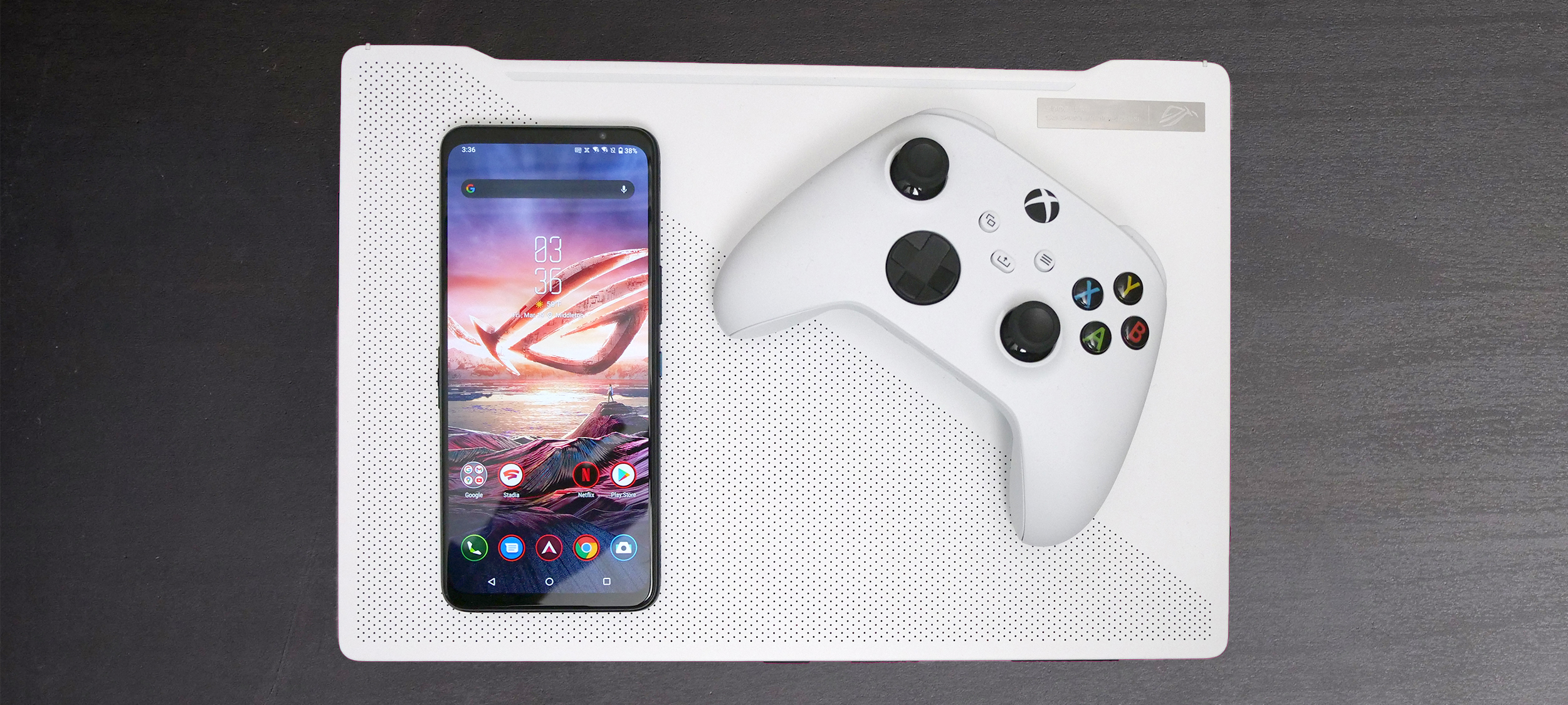Laptop Mag Verdict
The Asus ROG Phone 5 isn’t trying to compete with traditional flagships, it’s playing a different game —and winning.
Pros
- +
Unmatched performance on Android
- +
Excellent battery life
- +
Beautiful responsive 144Hz display
- +
Headphone jack with Quad DAC
- +
Extensive software optimization
Cons
- -
No wireless charging
- -
Weak camera performance
- -
Poor software support track record
Why you can trust Laptop Mag
Price: ~$1,188
OS: Android 11 / ZenUI
Display: 6.78-inch FHD+ AMOLED (2,448x1,080)
CPU: Qualcomm Snapdragon 888
RAM: 16GB
Rear cameras: 64MP wide (ƒ/1.8); 13MP ultrawide (ƒ/2.4); 5MP macro (ƒ/2.0)
Front camera: 24MP (f/2.5)
Storage: 256GB
Battery: 12:23 (60Hz); 10:53 (120Hz); 10:27 (144Hz)
Size: 6.8 x 3.1 x 0.36 inches
Weight: 8.4 ounces
Asus called the ROG Phone 5 “The ultimate gaming smartphone” and it’s hard to argue with that claim.
From the hardware, which includes the latest Snapdragon 888 processor, 16GB of LPDDR5 RAM, a 144Hz Samsung AMOLED display and a 6,000mAh battery, to the software that gives you almost endless options for tweaking the performance of the phone, the ROG Phone 5 feels more like a gaming laptop in your hands than a phone.
The question with the ROG Phone 5, as it always has been for gaming phones, is whether that’s enough to convince someone against buying a more balanced traditional flagship like the Galaxy S21 Ultra. While it won't appeal to as wide an audience, ROG Phone 5 showcases how a phone built with gaming at its core can deliver an excellent overall experience while being the pinnacle of mobile gaming on Android.
Asus ROG Phone 5: Price and configurations
The Asus ROG Phone 5 is the base model with the ROG Phone 5 Pro and ROG Phone 5 Ultimate above it. There are three configurations for the base ROG Phone 5: one with 8GB of RAM and 128GB of storage, one with 12GB of RAM and 256GB of storage and the most powerful with 16GB of RAM and 256GB of storage.
The ROG Phone 5 Pro and ROG Phone 5 Ultimate simplify things with just a single configuration available for each: 16GB of RAM with 512GB of storage and 18GB of RAM with 512GB of storage, respectively. It’s also worth noting that these two include the Aero Active Cooler fan in the box, which adds a couple of extra buttons and allows you to overclock the phone; this accessory is available as a separate purchase with the ROG Phone 5.
U.S. pricing isn’t official yet, but here’s a look at the Euro pricing with the conversion rate applied for the U.S. and the U.K.
- 8GB RAM/128GB Storage - €799 (~$950 / £684)
- 12GB RAM/256GB Storage - €899 (~$1,069 / £769)
- 16GB RAM/256GB Storage - €999 (~$1,188 / £855)
- ROG Phone 5 Pro - €1,199 (~$1,426 / £1,027)
- ROG Phone 5 Ultimate - €1,299 (~$1,545 / £1,112)
I reviewed the Storm White model of the ROG Phone 5 with 16GB of RAM and 256GB of storage, the phone is also available in Phantom Black.
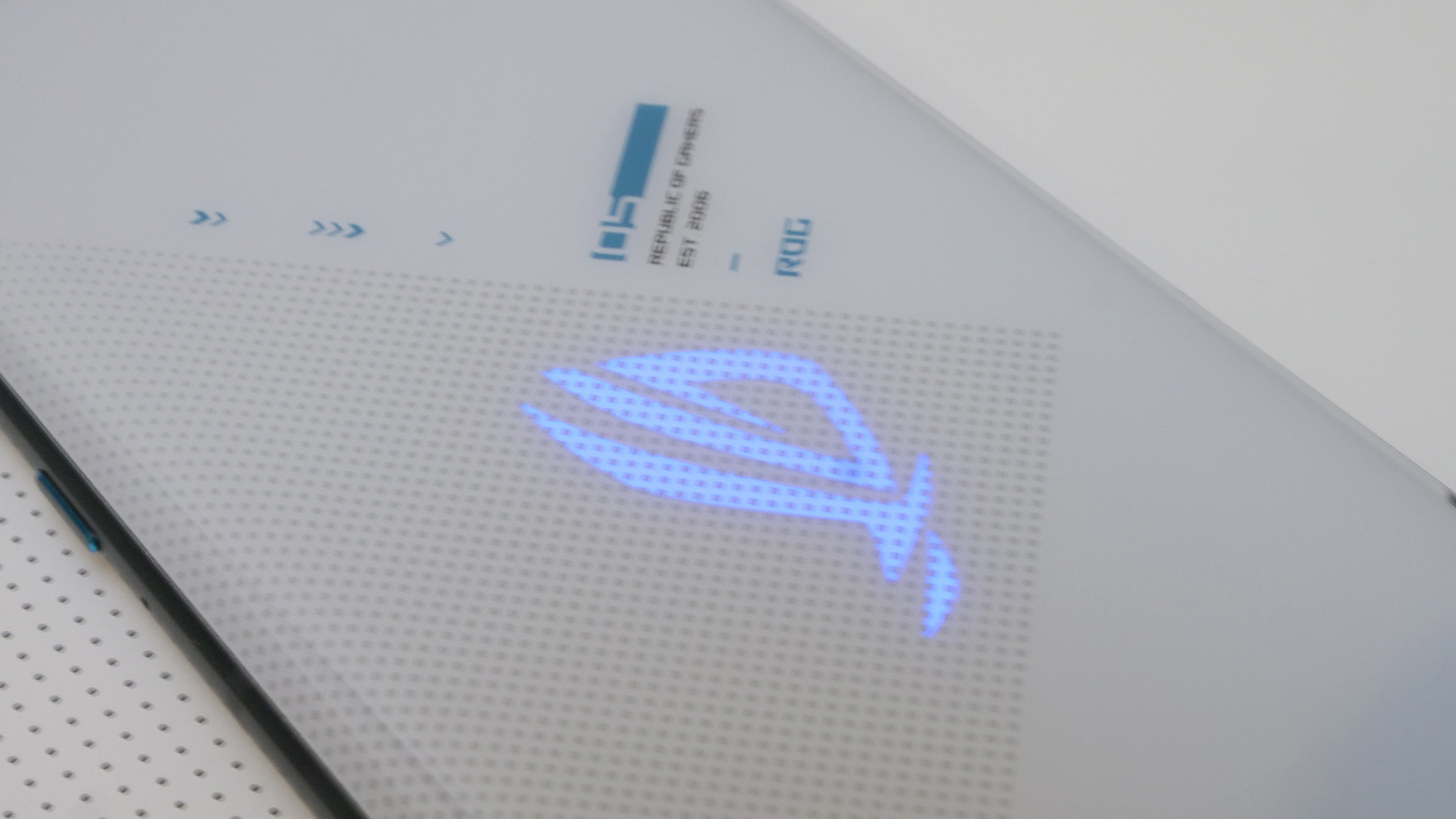
Asus ROG Phone 5: Design
The briefest glimpse at the back of the ROG Phone 5, even without the branding, would give it away as an ROG device to anyone who has used one of the company's recent gaming laptops. It carries some of the angular design over from the likes of the ROG Zephyrus G14, particularly in the Storm White of my ROG Phone 5 review unit and the Matte White of the ROG Phone 5 Ultimate.
From there, the ROGness intensifies, with text reading “ROG” and “Republic of Gamers” while the capper is the ROG logo or ROG Vision on the back of the phone, which varies slightly between models. The standard ROG Phone 5 I reviewed features an RGB color-changing light on the back. The ROG Phone 5 Pro and Ultimate add an actual PMOLED (Passive Matrix OLED) display that Asus is calling ROG Vision, which can display notifications, animations and more. On the Pro, this is full color while the Ultimate uses a monochrome display.
At 6.8 x 3.1 x 0.36 inches and 8.4 ounces, the ROG Phone 5 is one of the largest and thickest phones released in recent memory. But that was a deliberate choice by Asus to allow for better airflow and a large battery. Even the fairly massive Galaxy S21 Ultra (6.5 x 3 x 0.35-inches, 8.01 ounces) and iPhone 12 Pro Max (6.3 x 3.07 x 0.29-inches, 8.04 ounces) are shorter, thinner and lighter.
I don’t find the weight or thickness to be a concern, but the height definitely eliminates any chance of one-handed use. That’s, in large part, due to the top and bottom bezels — Asus didn’t want a notch or hole-punch camera interfering with your view of the display.
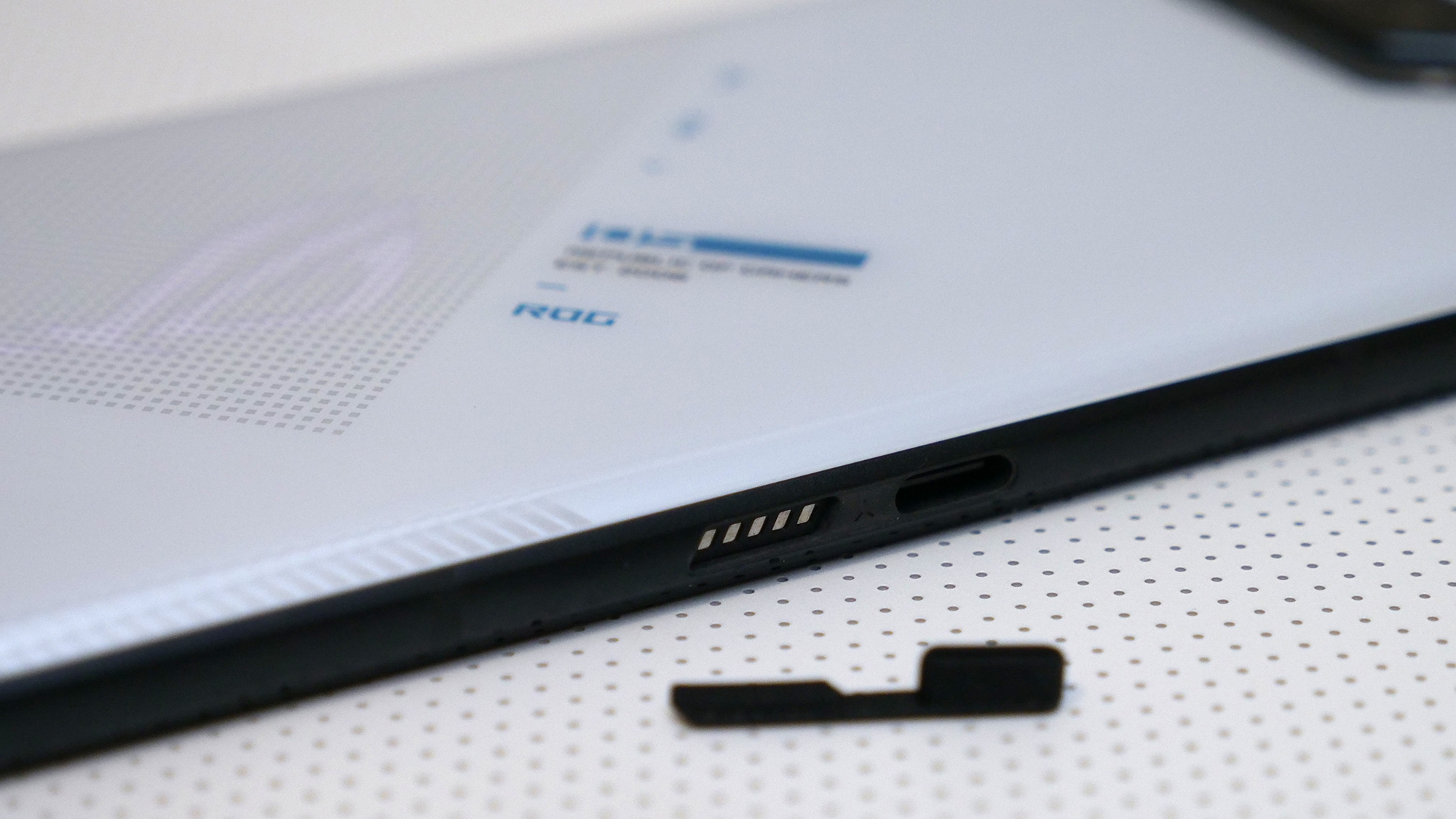
Now we get to a few of the truly unique features of the Asus ROG Phone 5 design. You have USB Type-C ports on both the side and the bottom of the phone, ensuring that you can stay charged up without having a cable get in your way. The side port is a more powerful USB Type-C 3.1 input as opposed to the USB Type-C 2.0 at the bottom of the phone.
The side port has a rubberized cover that also goes over the accessory connector. I will be astounded if anyone manages to not lose the cover within the first month of owning the phone. As the phone itself doesn’t carry an IP water resistance rating, you’ll need to be careful with it around water.
The 3.5mm headphone jack also makes a return and while many of us have moved on to wireless headphones, those who still prefer wired will want to stick around for the audio section because Asus did this right.
Finally, the AirTrigger system, for those who are unfamiliar, gives gamers sensors on the exterior of the phone that remap to buttons on the screen. This allows you to game without blocking your view even if you don't have a discrete controller. With AirTrigger 5, there are now nine sensors on the exterior of the ROG Phone 5 that can be mapped to up to 14 touchpoints. The Ultimate bumps this up even further with two more capacitive sensors. Use the AeroActive Cooler 5 fan that comes with the Pro and Ultimate models and you also gain two extra physical buttons for up to 18 touch inputs.
Asus ROG Phone 5: Display
The Asus ROG Phone 5 features a custom 6.8-inch, FHD+ (2,448 x 1,080) Samsung AMOLED display with HDR10+ support and a blistering-fast 144Hz refresh rate. Users can choose between 60Hz, 120Hz, 144Hz or Auto to balance performance needs with battery life. Touch sampling is also off-the-charts fast at 300Hz to ensure the phone never slows you down.
Obviously, gaming is the primary intent here, but with its large display and support for HDR10+ content, the ROG Phone 5 is a pleasure to watch videos on. I loaded up “The High Seas” episode of Our Planet on Netflix, which is available in HDR10, and watched the phytoplankton drift their way across the screen. The translucent green of the plants moving across the deep blue of the ocean as the rays of the sun stream in from above was absolutely exquisite on the ROG Phone 5.
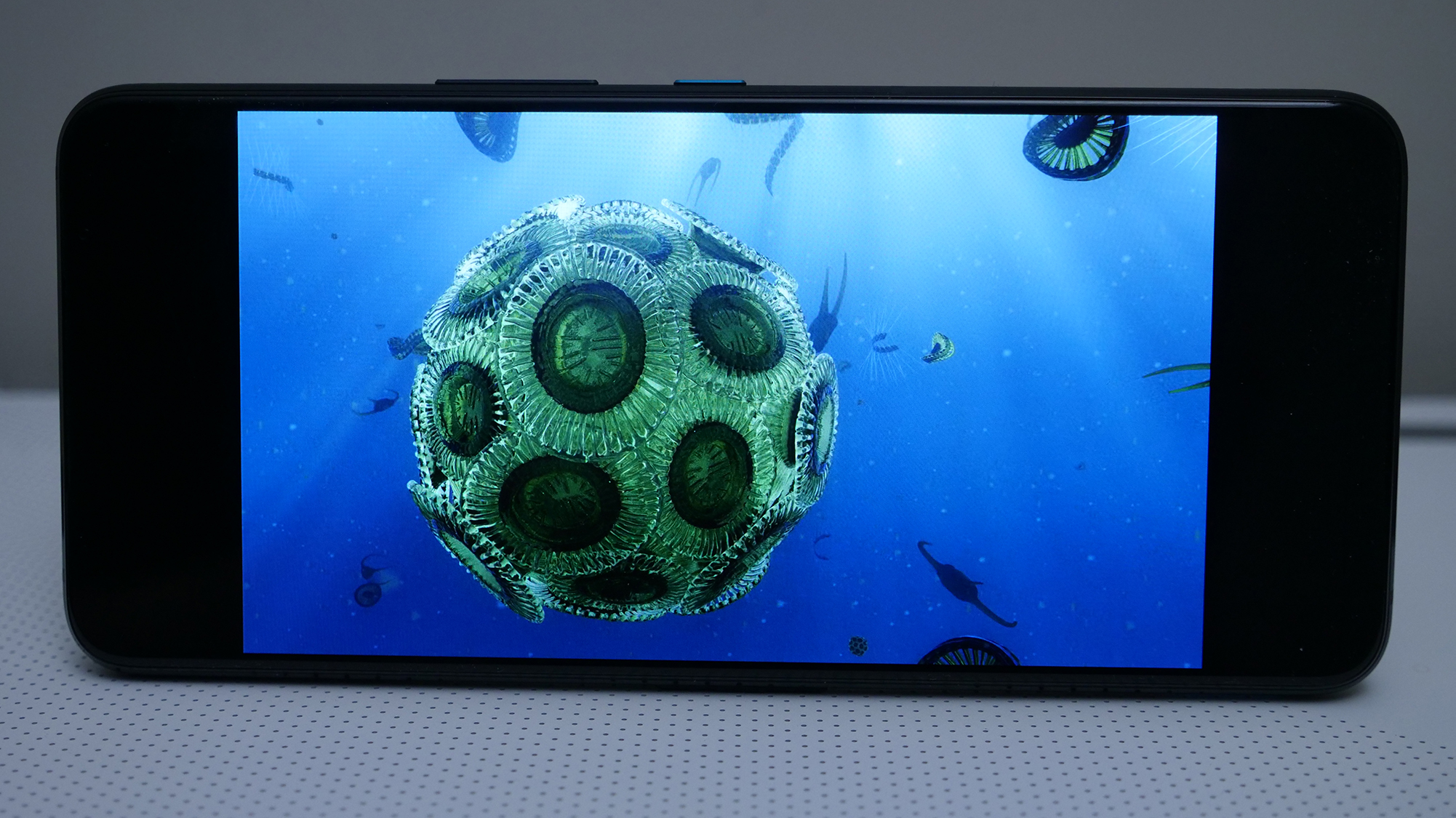
With its more natural settings turned on, the ROG Phone 5 reproduced a solid 112.8% of the DCI-P3 color gamut. That’s just above the Galaxy S21 Ultra (110.9%) and well ahead of the iPhone 12 Pro Max (84.8%). Switching the display settings to more vivid colors takes you all the way up to 127.6% coverage.
The results of the Delta-E color accuracy test (lower is better) were impressive as well. Again, using the more natural setting, the ROG Phone 5 achieved a 0.29, which was ahead of the Samsung Galaxy S21 Ultra (0.35) and just behind the iPhone 12 Pro (0.28).
Brightness is not a problem for the ROG Phone 5, which hit a peak of 748 nits. This dramatically outperformed the Galaxy S21 Ultra (380 nits) and was solidly ahead of the iPhone 12 Pro Max (655 nits).
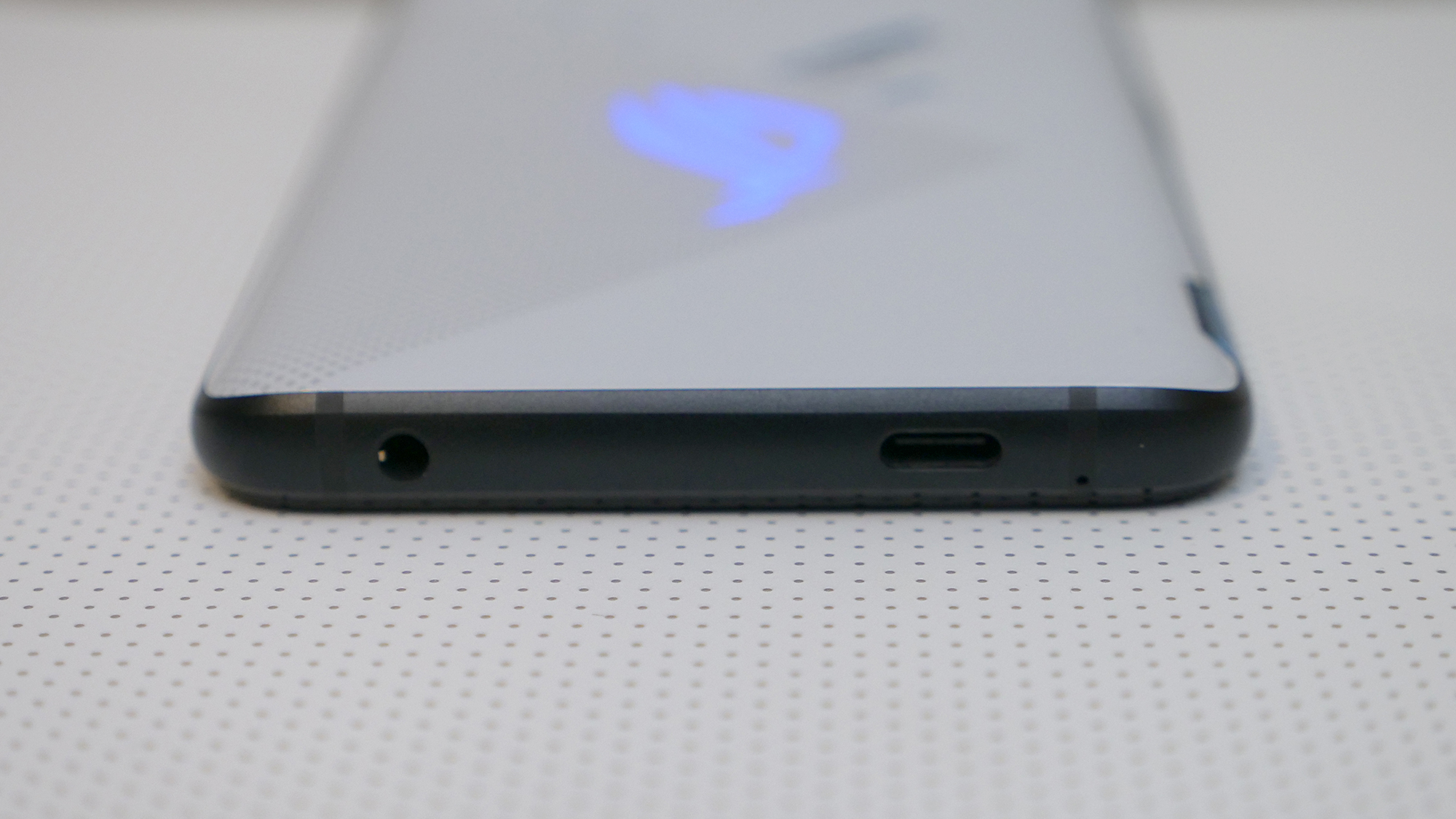
Asus ROG Phone 5: Audio
The Asus ROG Phone 5 features front-facing symmetrical speakers that are easily the loudest and best sounding of any smartphoneI can recall. There’s no distortion at any volume and while there are, of course, some limits, there is actually a perceptible low end present which is basically unheard of on a smartphone.
I listened to Dua Lipa’s “Levitating,” and the Asus ROG Phone 5’s stereo speakers predictably delivered with no problem, overwhelming my 12 x 18-foot listening space. The disco-like track managed to keep the punchy vocals separate from the pounding background bass and was enough to convince me that a Bluetooth speaker would be uncalled for in most circumstances with this phone.
Now, with excellent Bluetooth 5.2 support, a good pair of wireless headphones is still going to be better than the admittedly capable speakers on the Asus ROG Phone 5, but this phone also brings back the headphone jack. Not only that, but it features a built-in HyperStream II Quad DAC to deliver superlative wired audio performance for those who want the absolute best.
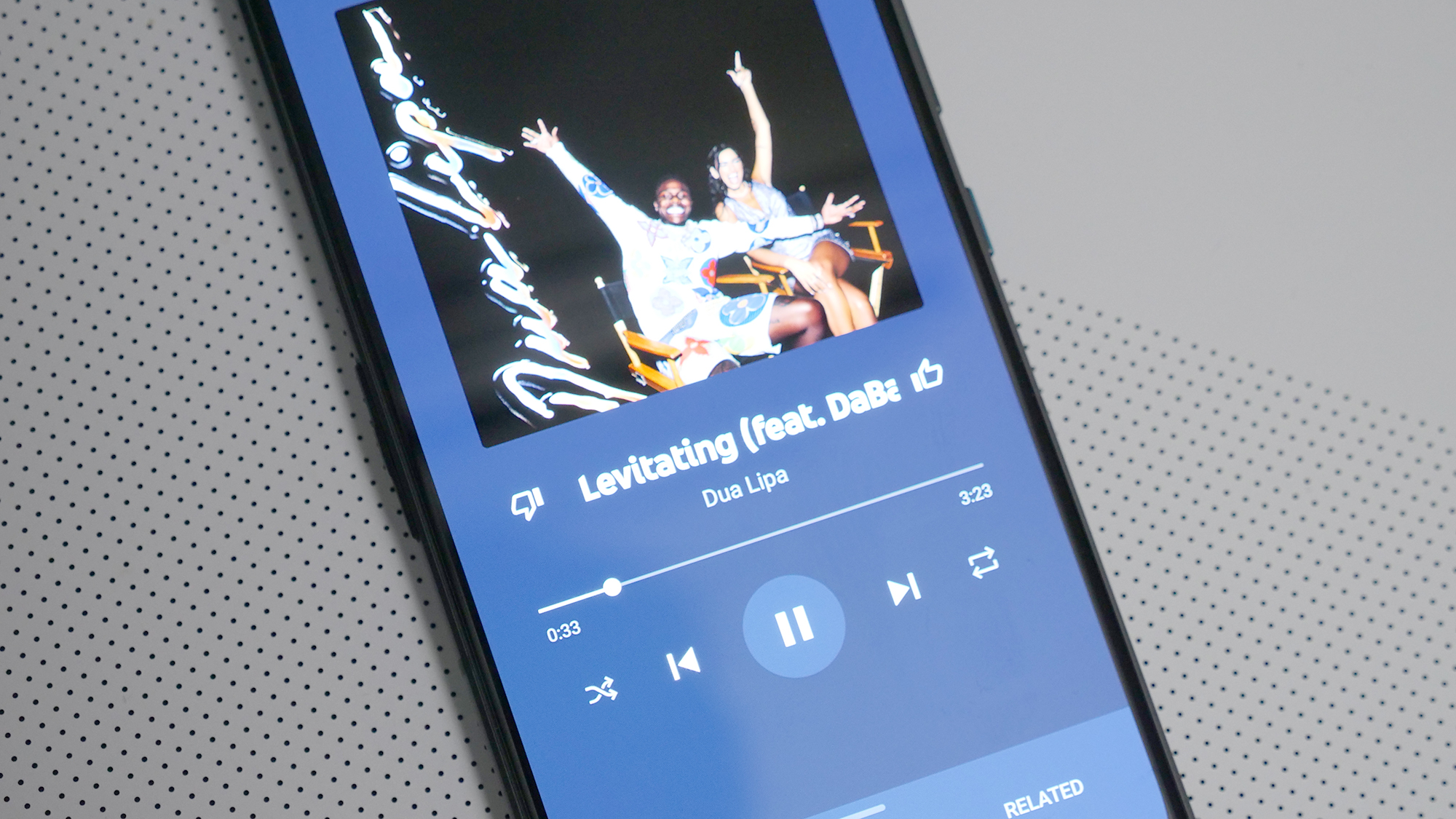
Asus ROG Phone 5: Performance
As you would hope from a phone singularly focused on its gaming prowess, the ROG Phone 5 is unthinkably quick at everyday Android tasks. Swiping between screens, launching apps, multitasking — it all happens without the slightest hesitation. Some of this goes back to that high refresh rate and touch sampling rate, but it's the Snapdragon 888 and up to 16GB of RAM that make it possible to move those pixels around that fast.
There’s no game available on Android at present that can bog down the Asus ROG Phone 5. You can max out all of the settings on every game and the phone will handle it without issue. While the number of games that support the full 144Hz is vanishingly small right now, the 120Hz collection is growing and with more 144Hz phones likely coming next year, I imagine we’ll see more move to faster refresh rates as the year goes on.
Despite using the same processor as the Galaxy S21 Ultra, the Asus ROG Phone 5 has now claimed the top spot among all Android phones with a Geekbench 5 multi-core score of 3,672. That honor was briefly held by the aforementioned Galaxy S21 Ultra (3,440) though, of course, the iPhone 12 Pro Max (4,111) buries them both.
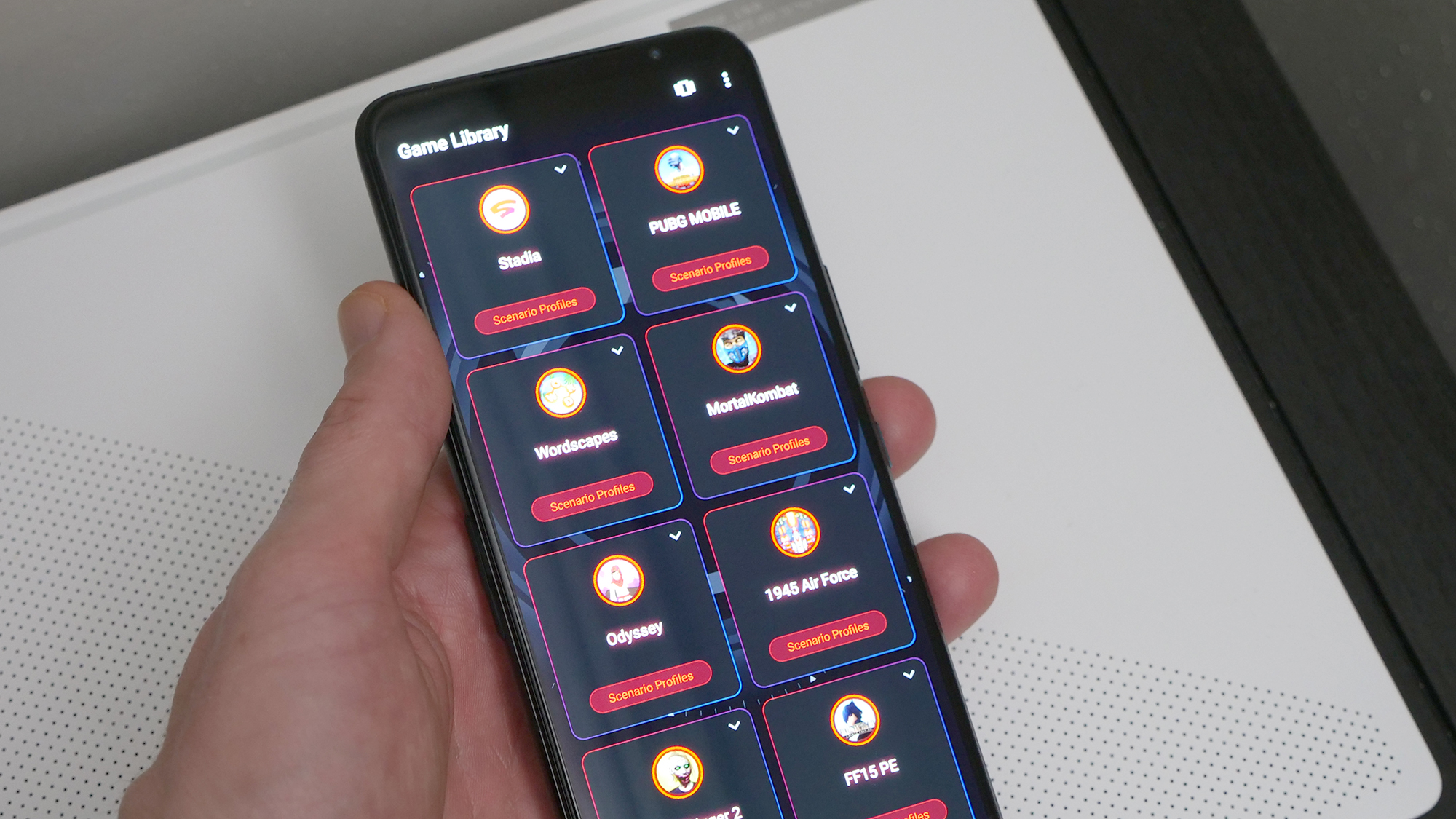
Graphics testing proved less decisive for the ROG Phone 5, but it did manage a narrow lead in the Wild Life Unlimited 3DMark test at 35 fps, ahead of the Galaxy S21 Ultra (34 fps), but again distantly behind the iPhone 12 Pro Max (54 fps).
Our Adobe Premiere Rush testing went similarly; this video transcoding test requires the phone to convert a 4K video to 1080p and the ROG Phone 5 completed it in 1 minute precisely. The Samsung Galaxy S21 Ultra (1:03) was just a bit behind the Asus while the iPhone 12 Pro Max (0:29) was impossibly far ahead.
None of this should come as a surprise; the ROG Phone 5 is purpose-built to deliver the best performance possible out of these components. The re-engineered vapor chamber allows it to stay cooler for longer and that's before incorporating the snap-on AeroActive Cooler 5 fan that will offer dramatically more cooling and enable overclocking.
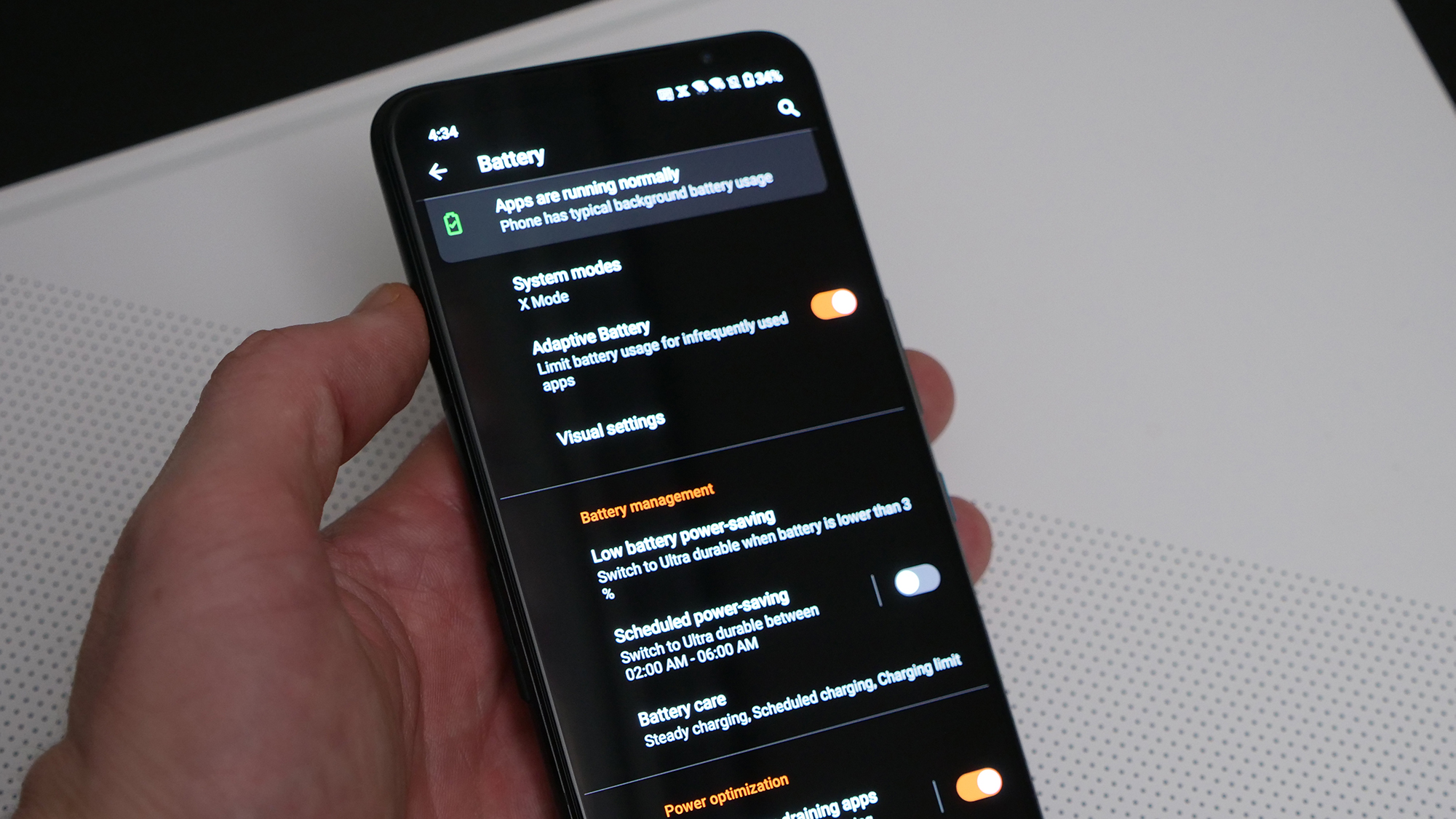
Asus ROG Phone 5: Battery life and charging
Given the incredible power of the Asus ROG Phone 5, you'd hope that it doesn't skimp on battery. Don't worry, you will not be disappointed. The ROG Phone 5's 6,000mAh battery is one of the largest we've seen in a mainstream smartphone.
That's not even the best news; while the previous model also features a 6,000mAh battery. This time around, the phone is using the same dual-battery strategy first seen with the OnePlus 8T last year. So the 6,000mAh is, in reality, two 3,000mAh batteries, allowing for incredible 65W fast charging, and yes, that charger is included in the box. In our benchmarks, it reached 44% in just 15 minutes and 70% in 30 minutes.
Battery life was quite good as well, holding on for 10 hours and 27 minutes even at its full 144Hz setting in our test, which involves constant web browsing over cellular at 150 nits. Turning the refresh rate down to 120Hz bumped this to 10 hours and 53 minutes while dropping all the way to 60Hz pushed it to 12 hours and 23 minutes. That was almost an hour ahead of the Galaxy S21 Ultra at 60Hz (11:25) and an hour and half longer than the iPhone 12 Pro Max (10:53).
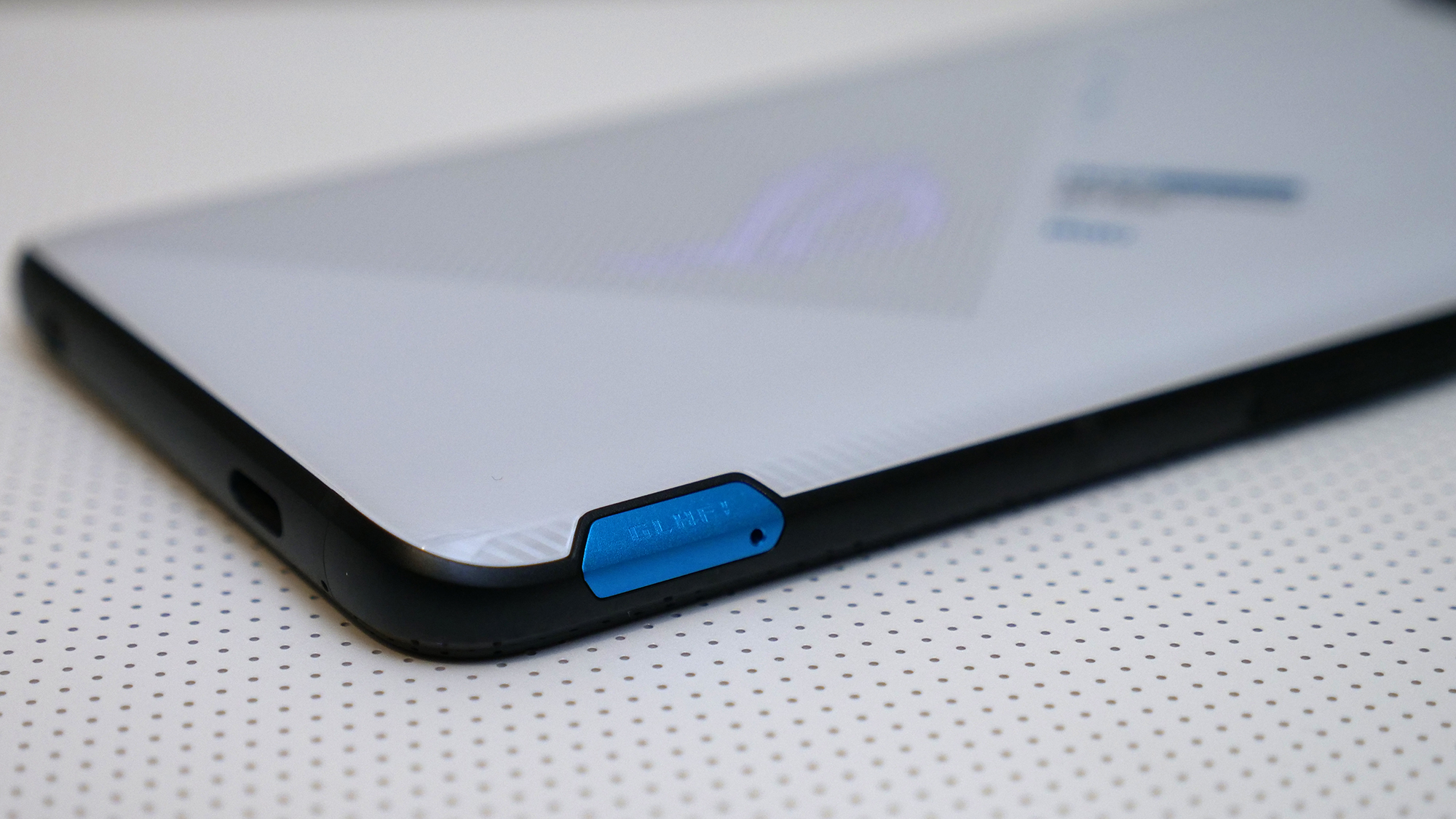
Those tests were all performed on AT&T, but the ROG Phone 5 performed even better on T-Mobile where it managed an amazing 13 hours and 38 minutes at 60Hz. That dropped to 10:59 for 120Hz and somewhat oddly popped back up to 11:17 for 144Hz.
I didn’t follow my normal review usage pattern with this phone because, as Asus would want, I spent quite a bit more time gaming on it. Playing intensive games for long periods will burn through the battery in less than a day, but it would take a good five to six hours of something like COD Mobile, PUBG or Genshin Impact to knock it out.
A more balanced day of usage with some Netflix and/or YouTube streaming, along with web browsing, social media and the like is not going to come close to killing the ROG Phone 5 battery before you need to put it on the charger at night.
If you do manage to use up most of your battery in a day, the incredible fast charging will top you back up in no time. Asus also added a number of software tools to protect the battery, including a bypass mode that will deliver the power needed to the phone without actually charging the battery. It’s a clever addition to keep the phone fully powered without damaging the battery by constantly charging it.
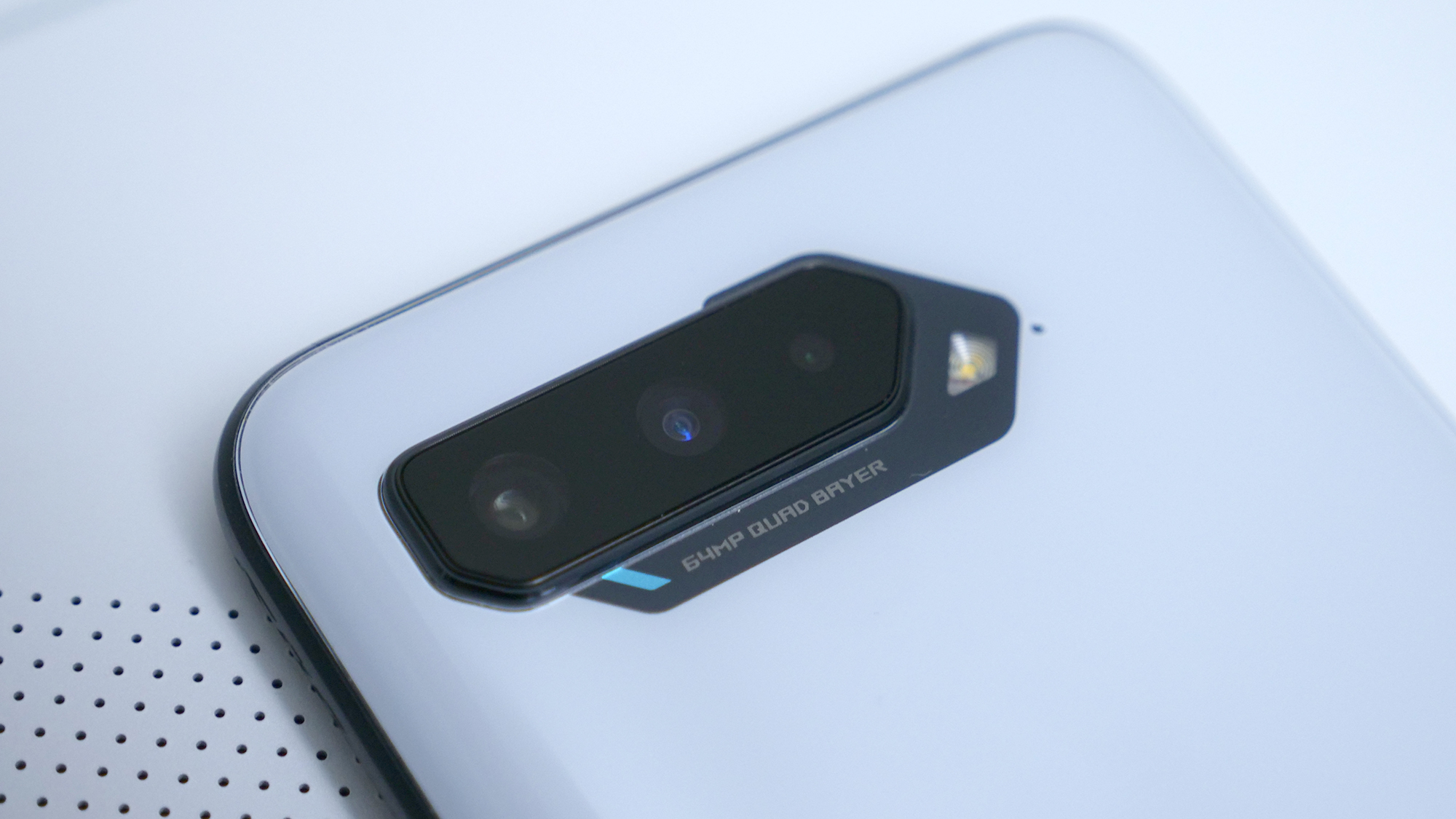
Asus ROG Phone 5: Cameras
One area the Asus ROG Phone 5 cedes to other flagships is camera quality. The triple camera array found on the back is akin to what you would find on an upper-midrange phone.
The primary camera is the Sony IMX686, which is a 64MP f/1.8 wide-angle. The secondary is a 13MP f/2.4 ultrawide and finally, in classic mid-range fashion, there is a 5MP f/2.0 macro.
While the cameras on the ROG Phone 5 remain an afterthought when compared to a traditional flagship, they are at least competent this time around.
Wide-angle camera
Surprisingly, I was the least impressed with the performance from the primary wide-angle lens, which is unquestionably the best of the three sensors. As you can see in the samples below, the color is lacking in the shots and, while Wisconsin is admittedly, not at its finest in mid-March, the sky was a much richer blue than what you see here.

Asus ROG Phone 5 wide-angle

Asus ROG Phone 5 wide-angle camera sample

Asus ROG Phone 5 wide-angle camera sample
Ultra-wide camera
The ultra-wide lens did a far better job with color reproduction and gave me some very satisfying landscape shots. I can definitely see some warping at the edges, but it’s only apparent when you place a straight edge near the outside of the shot, which is often avoidable.

Asus ROG Phone 5 ultra-wide camera sample

Asus ROG Phone 5 ultra-wide camera sample

Asus ROG Phone 5 ultra-wide camera sample
Macro camera
The macro camera is as always pretty limited in utility, but it can be fun. You need to be within 4-6cm of an object to use it, but if you've got something pretty tiny to snap a photo it can turn out much better results than relying on a traditional lens.

Front-facing camera
The front-facing camera on the ROG Phone 5 does some fairly aggressive editing when in portrait mode, both in terms of skin smoothing and its attempt at producing bokeh. It especially had difficulties with my hair, which I’ll concede was getting whipped around a bit in this photo as it was a windy day. Nevertheless, the camera had trouble holding its imaginary plane of focus here.

Video
The Asus ROG Phone 5 is capable of 8K up to 30fps and 4K at up to 60fps, but this isn't a primary focus for the ROG Phone 5.
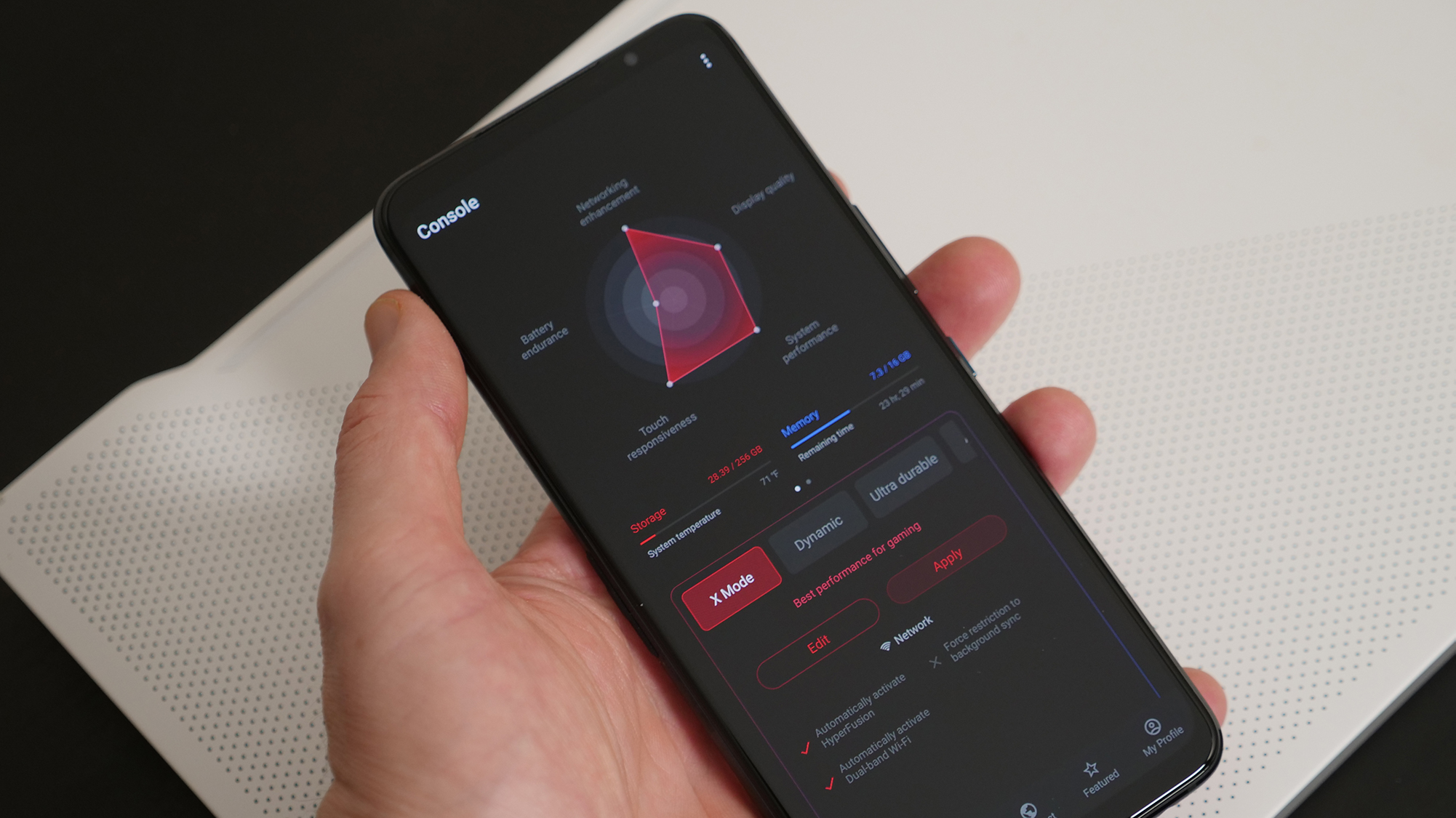
Asus ROG Phone 5: Software
The Asus ROG Phone 5 ships with Android 11. And while you have the option of a basic stock Android look, it’s hard to imagine choosing this maxed-out gaming phone and not leaning fully into that aesthetic with the ROG UI, which adds a lot more animation along with some fun graphics touches throughout.
I’m not going to try to cover every added software touch Asus gave the ROG Phone 5 as it's honestly a bit overwhelming. If you thought the design and hardware was the only thing making this the ultimate gamer’s phone, you were wrong; the absolutely improbable level of software tweaking you can do to optimize the phone on a per-game level will have gamers salivating.
This is predominantly handled through the Armoury Crate app, which gives you an overall system settings view that you can tweak to deliver battery life, networking, refresh rate, touch responsiveness and overall system performance. Asus gives you some default options to choose from or you can craft your own settings.
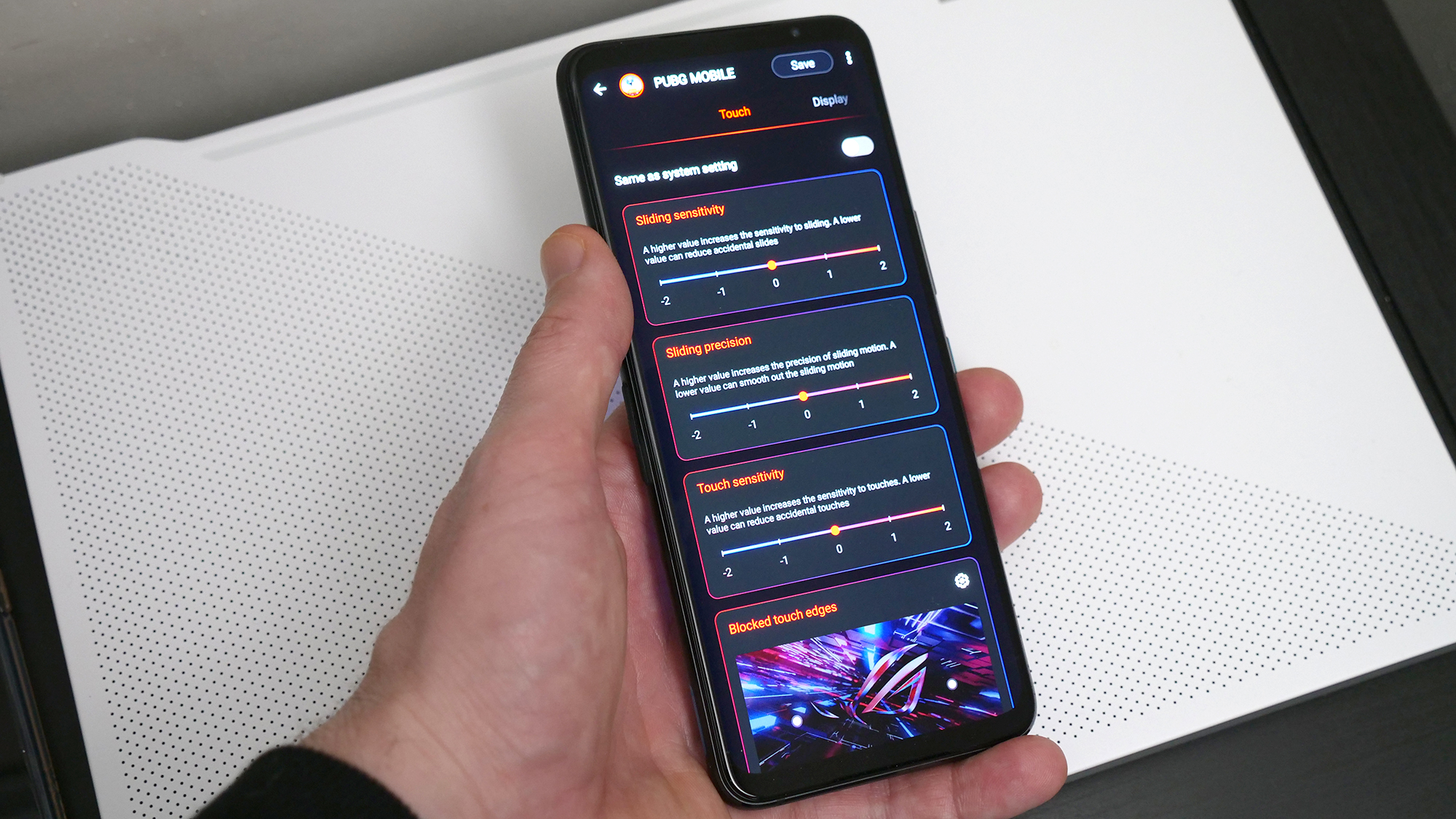
While these global settings can apply to everything, the Game Library allows you to create distinct settings for any game that you have installed. Those adjustments go into effect the moment you launch the game.
Armoury Crate also helpfully has a list of recommended 144Hz and 120Hz games that will take you straight to the Play Store. These can be a bit difficult to track down on your own so it’s a nice addition.
The one downside to all of this customization is that (I suspect) it plays a part in the relatively slow Android update schedule from Asus. The ROG Phone 3 is just now receiving an Android 11 beta roughly six months after the launch of the newest OS version. This likely won’t be a dealbreaker for those that are just looking for the best gaming experience possible, but it’s a consideration.

Bottom line
The Asus ROG Phone 5 isn't going to take over the smartphone world, but it is a perfect example of a niche device that should flawlessly serve the mobile gamers who it is targeting. With the rise of game streaming services, we are seeing new worlds of games open up to mobile gamers beyond what's available in Google Play, which is itself improving.
Put simply, this phone is uniquely suited to giving you a fantastic mobile gaming experience on the go. The relatively weak camera performance and software update schedule are the biggest trade-offs when compared to a more traditional flagship like the Galaxy S21 Ultra or the upcoming OnePlus 9, but from both a pure performance and gaming standpoint, no other Android phone can outclass the ROG Phone 5.
Sean Riley has been covering tech professionally for over a decade now. Most of that time was as a freelancer covering varied topics including phones, wearables, tablets, smart home devices, laptops, AR, VR, mobile payments, fintech, and more. Sean is the resident mobile expert at Laptop Mag, specializing in phones and wearables, you'll find plenty of news, reviews, how-to, and opinion pieces on these subjects from him here. But Laptop Mag has also proven a perfect fit for that broad range of interests with reviews and news on the latest laptops, VR games, and computer accessories along with coverage on everything from NFTs to cybersecurity and more.
